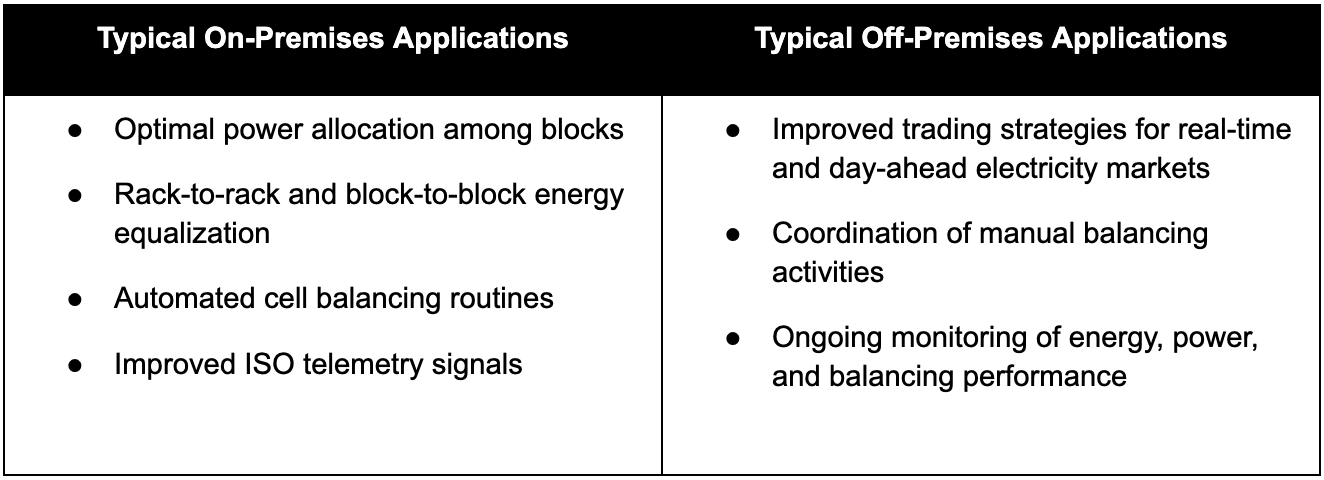Most grid-scale battery energy storage systems (BESS) fail to meet performance, availability, and revenue goals—not because of the batteries themselves, but because conventional BESS control systems have two fundamental flaws: 1) ineffective balancing and 2) inaccurate state estimates of available energy and power.
Here you’ll learn how the integration between Zitara and Ovation solves these problems to maximize BESS asset availability, performance, and revenue generation.
Zitara for BESS: A purpose-built software solution to improve BESS performance
Zitara for BESS is a purpose-built software solution that enables smarter balancing and more accurate state estimates, empowering asset operators to overcome the two fundamental limitations of conventional BESS systems.
The new integration between Emerson’s industry-leading Ovation™ platform and Zitara for BESS leverages Zitara’s patented, proprietary algorithms to deliver the insights operators need to optimize BESS operations, maintain high levels of availability and performance, and maximize revenue generation.
Learn more about Emerson and Zitara’s strategic partnership to enhance battery management solutions.
Output signals to support diverse BESS applications
Zitara for BESS produces a wide range of output signals. For example, the software solution can:
- Replace existing signals from conventional BESS systems with more accurate, more reliable alternatives. Signal behavior and points lists are tailored to specific BESS project requirements so they may serve as direct, drop-in replacements for existing control signals, as needed for the project.
- Deliver new, presently unavailable signals that provide unparalleled insights into BESS system operations
Importantly, these output signals can be consumed by both on-premises controls and off-premises operation centers for a diverse range of applications.

The result is more profitable, more reliable assets that deliver greater value for owners, operators, and offtakers.
Deploying Zitara for BESS with Emerson Ovation
Zitara’s deployment approach prioritizes security, simplicity, and flexibility.
Specifically, Zitara for BESS has been designed for rapid deployment on industrial-grade hardware in high-security environments, including regulated utility projects. It is compatible with a wide range of BESS system vendors and project architectures, as well as both new and retrofit projects.
Here’s what a typical integration looks like:
- On-site installation
First, Zitara for BESS is deployed on an industrial-grade Emerson Windows Base Station. For maximum resiliency, operators can opt to configure the software solution in a redundant dual-server arrangement with warm failover.
- Data acquisition and publication over the Ovation network
Zitara for BESS seamlessly integrates with existing control systems over the Ovation network. This way, it can directly receive the required input data, including current, voltage, and temperature readings from each battery rack in the BESS project.
After processing these inputs, Zitara for BESS produces and publishes outputs over the Ovation network, making them available to other local devices as well as any device (on- or off-prem) connected to the network.
- Algorithm execution—locally and on-prem
Notably, Zitara for BESS’s entire architecture is on-premises, which means no additional support is required from off-prem or cloud services, thus mitigating a wide range of potential security vulnerabilities.
- Ongoing support
Zitara for BESS has been validated on real-world systems. After deployment, our expert team continues to provide ongoing support to ensure reliability, security, and no-drama operations that just work.
Dive deeper into our new approach to battery balancing and state estimates with the technical white paper: Maximizing BESS Asset Availability.
Conclusion: Better BESS performance with Zitara and Ovation
Conventional BESS control systems undermine asset availability and performance with ineffective balancing and inaccurate state estimates.
Deployed on premises over the Ovation network, Zitara for BESS offers asset operators a way to overcome these limitations with patented, proprietary algorithms that improve both balancing operations and signal accuracy to enable more profitable, more reliable assets.
Learn more about how Zitara’s partnership with Emerson improves battery performance, lifetime, and safety across diverse applications.
Keep updated on Zitara insights, news, and events.
Get unparalleled insights into your batteries.
Upgrade your battery management
Embedded software to manage, monitor, and maximize your deployments.
 Learn More
Learn More.svg)

